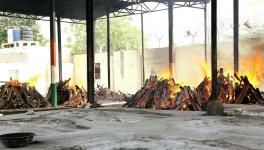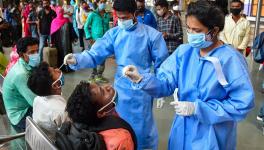Making Sense of the COVID Deaths from Kerala
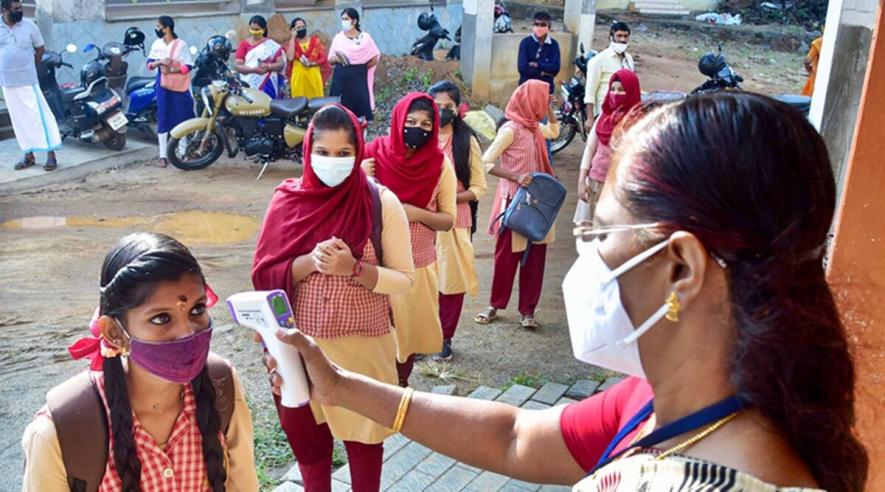
Over the last few months, especially during the second wave of the COVID-19 pandemic in India, it has become increasingly clear that a better measure of the effectiveness of the health response of different states is not the number of reported cases, but the all-cause mortality during the same period. This is due to a variety of factors, including differences in testing strategies (leading to higher or lower number of cases identified) and the importance of ensuring that health services are not disrupted and hospitals not overwhelmed during the period.
Journalists across the country have accessed data from India’s Civil Registration System (CRS) to find out reported all-cause mortality during the pandemic period and compared it to recent non-pandemic years. Since all-cause mortality would account for both, missed COVID-19 deaths and deaths due to other reasons, such efforts have helped in giving a clearer picture of the impact of the pandemic and the response against it. Huge increases in all-cause mortality during the pandemic period, or ‘excess deaths’, have been reported all over India. Estimates of ‘excess deaths’ so far in the country vary between 2.2 to 4.9 million.
Excess Deaths in Kerala
According to CRS data accessed by The Hindu, 3,03,313 deaths were registered in Kerala from April 2020 to May 2021, the period for which data was available. When compared to the average mortality of 2015-2019 figures, this translates to 13,868 ‘excess deaths’ during the period. However, when compared to the average mortality of 2018 and 2019 figures, this comes to 4,178 ‘excess deaths’. This is because mortality in Kerala had been increasing during the five-year period before the onset of the pandemic. Similar data for the neighbouring southern states of Karnataka and Tamil Nadu indicate well over 1,00,000 ‘excess deaths’ in both states. A number of other large states, including West Bengal, Andhra Pradesh, Madhya Pradesh and Bihar have all reported between 1,00,000 and 2,00,000 ‘excess deaths’ during the same period.
As researcher Subin Dennis noted, if Kerala had had a similar rate of ‘excess deaths’ as these states, deaths in Kerala would have been much higher. When taking the same rate of reported ‘excess deaths’ as Tamil Nadu and accounting for the lower population in Kerala, the state would still have witnessed 67,804 additional deaths – the figure comes to 62,575, 76,446 and 1,27,205 when the rate of reported ‘excess deaths’ in Karnataka, Madhya Pradesh and Andhra Pradesh are considered respectively. Kerala has thus averted tens of thousands of deaths during this period, despite its high population density.
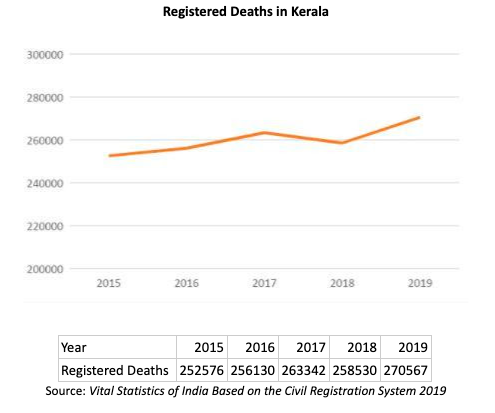
Though the reported ‘excess deaths’ in Kerala are hence comparably very low, if one were to compare all-cause mortality in Kerala from April 2020 to May 2021 to a mortality projection for the period based on linear growth in mortality between 2015-2019, it would drop sharply to -9351 (9351 deaths lower than a projected mortality of 3,12,664 deaths).
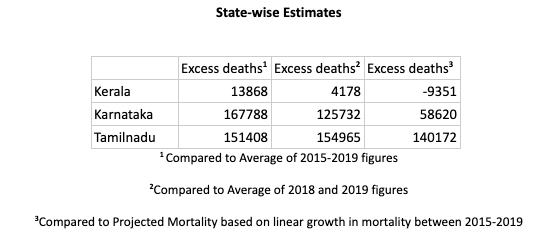
Why Consider Projected Mortality?
Continuing decline in fertility and increase in life expectancy results in a difference in the proportion of the older population (60+ years of age). The ‘Population Projections for India and States 2011-2036’ Report by the Technical Group on Population Projections of the National Commission on Population under the Ministry of Health and Family Welfare cites Sample Registration System (SRS) data indicating that Kerala has achieved lower fertility and mortality rates earlier than other states as the reason for the increase in proportion of the older population in the state.
The report estimates an increase in people aged 60 years and above in the state – from 13% in 2011 to 23% in 2036. As a result, despite the highest estimated life at birth in the country (75.3 as against an all-India average of 69.4), Kerala has seen a rise in mortality prior to the pandemic. SRS data from 2017 estimates that 77.1% deaths in Kerala were of those aged 60 and above, much higher than the all-India average of 54.5%. Even during the pandemic period, the older population accounts for around 74% of the reported COVID-19 deaths in the state.
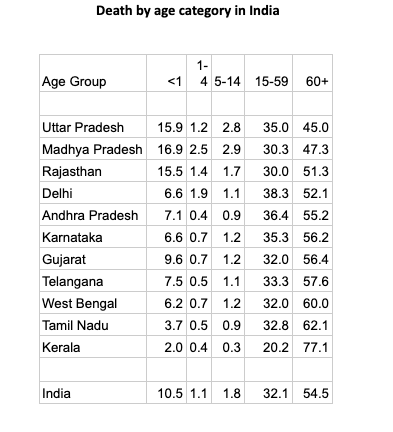
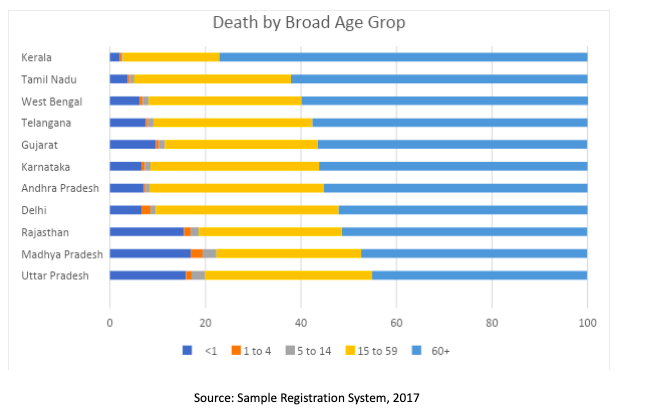
Since Kerala reports 100% of its deaths and since its aging population results in increasing mortality over the years, it thus makes sense to estimate ‘excess deaths’ based on a mortality projection (Excess Deaths3) rather than a baseline year or average from the last few years prior to the pandemic. This would indicate how well the state’s public health response to the pandemic has been, even considering reduction in deaths due to road accidents, respiratory diseases, food and water-borne illnesses etc.
A Word of Caution
Though the reported all-cause mortality has been low in Kerala during April 2020 to May 2021, thus resulting in low or even negative estimated ‘excess deaths’ during the period, there is a note for caution. All-cause mortality in the state is likely to go up in the coming months when the delay in registration of previous deaths is also accounted for. The monsoon season is also a period in which deaths in the state are usually higher than in previous months.
The fact that the fourth round of the nationwide sero-survey conducted by the Indian Council of Medical Research (ICMR) shows the spread of COVID-19 in the state to be the lowest in India, also means that there is a larger population susceptible to contract infection. As reported cases continue to rise despite the rate of vaccination, the continued success of Kerala’s health response lies on its ability to keep maintaining a low Case Fatality Rate (CFR), which now stands at 0.51% as against a National CFR of 1.34%. This would mean that it needs to continue with its testing strategy and ensure that hospitals are not overwhelmed and other health services disrupted.
Get the latest reports & analysis with people's perspective on Protests, movements & deep analytical videos, discussions of the current affairs in your Telegram app. Subscribe to NewsClick's Telegram channel & get Real-Time updates on stories, as they get published on our website.









